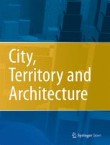Citation Impact 2023
Source Normalized Impact per Paper (SNIP): 1.504
SCImago Journal Rank (SJR): 0.446
Speed 2023
Submission to first editorial decision (median days): 31
Submission to acceptance (median days): 294
Usage 2023
Downloads: 359,635
Altmetric mentions: 77
